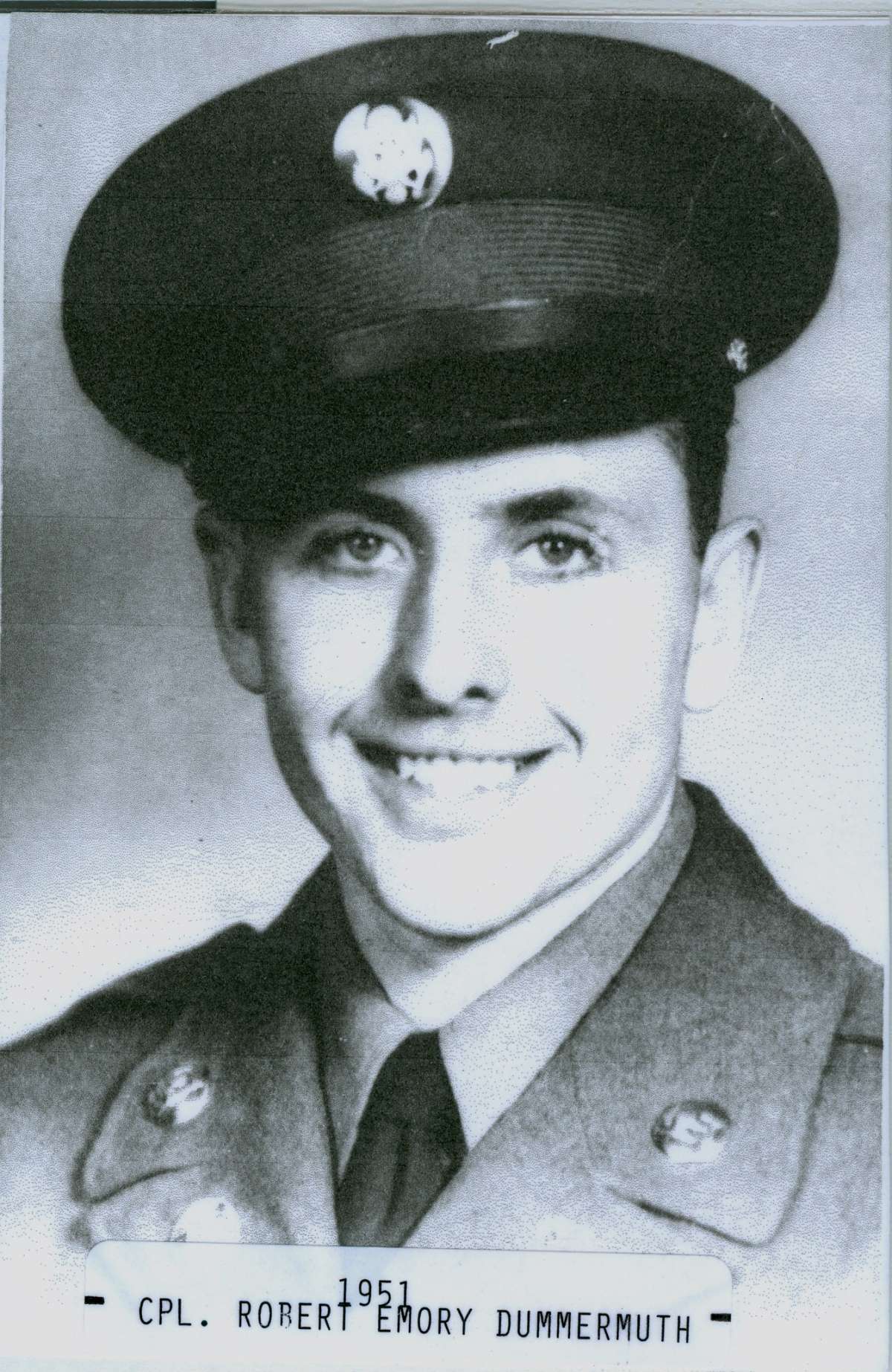Biography
We would like to express our thanks to Robert’s younger sister, Janita Loftus, who wrote to us about memories of her brother. Here is Bob’s story, using mostly in Janita’s words.
Bob was born November 14, 1927 at the West Union, Iowa, hospital. He was a very small and sickly baby. Their uncle, Walter Dummermuth, always said he didn't expect Bobby to live a full year.
As it turned out, Bobby lived to become a very energetic, productive, athletic young man. The family owned a farm where cows, pigs and grazing cattle were raised. In the small creek that ran thru the farm, Bob trapped mink and muskrat in the late months of the year. Skins were stretched over thin boards until they were dried and then sold in late December.
Bob rode a riding horse to country school that was about 6 miles away. Six years later when Janita started school, she got a pony that she rode in good weather. In cold weather she and Bobby rode double to stay warm.
When Bob was finished with country school, he entered West Union High School. He had an old model "A" Ford for the kids to get to school. He went out for all sports - baseball, football and basketball and would have to hurry home after practices to do chores. On game nights he had to rush home to do chores and then back to school for the game.
In the summer, he of course had to help plant the crops and make hay. He liked animals and raised pigs for FFA projects.
Bob did a lot of hunting and fishing and got to go to northern Minnesota to fish with friends after graduation in 1947.
In the fall of 1947, Bob and three of his friends went to Iowa State College. Bob majored in Dairy Plant Operations and studied soft ice cream and butter making. He attended from Fall quarter 1947 through Winter 1948. Bob and his friends all had part time jobs and had a great time on campus.
The following summer, Bob and his friend Paul, purchased a motorcycle and took off for California. From there they went to Oregon. Sadly, they were hit by a drunken driver. Both were thrown from the bike in opposite directions. The motorcycle was totaled. Since they were from out of state, they were given very little for the bike. Needing funds, they found jobs in a lumber mill. After saving enough money, they hitchhiked back home where they both worked for their fathers. Janita is not sure why Bob did not go back to school.
In 1950, Bob went into business with his father, Emory. He purchased 200 acres of grass land where they were to graze cattle.
That same year, on December 31, 1950, he married Patty Bostrom. On January 9, he reported to Fort Riley, Kansas for duty in the Army. With his college experience, he was offered the opportunity to go through officer’s training, but he turned that down. He did not want to be in the Army that long.
Bob was a corporal in Company B, 1st Battalion, 7th Cavalry Regiment, 1st Cavalry Division.
Patty moved to a Manhattan, Kansas apartment to be closer to Bob. That summer, Janita and her mother visited them and took Bob's German shepherd, King. King stayed with Bob’s parents while he was in the service.
Janita remembers when Bob shipped out from Seattle, Washington for Korea, and the family learned shortly after that that Bob and Patty were expecting. The two had already picked out names for either a boy or a girl.
Bob died on October 10, 1951 near Chorwon, North Korea, though the family did not received notification until the very end of October. Chorwon was one leg of the infamous “Iron Triangle” of the Korea War.
It’s likely that Bob died during operations connected with the Battle of Heartbreak Ridge, a month-long engagement fought from September 13 to October 15 1951. It was one of several major engagements in an area known as "The Punchbowl" - an enemy staging area in the hills of North Korea, a few miles north of the 38th parallel near Chorwon.
Fighting was fierce, with attacks and counter-attacks fought in very constricted terrain. The disputed mountain ridgeline - called Heartbreak by the American infantrymen - changed hands many times in a series of attacks and counterattacks.
Late in September, a new strategy was developed to cut the ridge off from enemy reinforcement. Improved roads were built by the Army into the valleys and hills adjacent to Heartbreak so that tanks could enter the area and destroy enemy supply dumps.
On October 10 everything was ready for the big raid. The sudden onslaught of a battalion of tanks racing up the valley took the enemy by surprise. UN forces were able to encircle the area and eliminate reinforcement, turning the tide of the battle. Bob was among the American casualties from this day’s operation.
After two more weeks of combat, the Americans and French gained the upper hand and secured Heartbreak Ridge. Casualties were high. In the aftermath, U.N. Command decided they were too high and Heartbreak Ridge was the last major offensive conducted by U.N. forces in the war that ended on July 27, 1953.
Five months after Bob died, Bob and Patty's son was born on March 1, 1952 and named John Paul after Bob’s good friend.
Stone monuments such as the Memorial Union’s Gold Star Hall serve a good purpose – but perhaps the most fitting memorial for the dairy farmer from northeast Iowa, was this little child.
